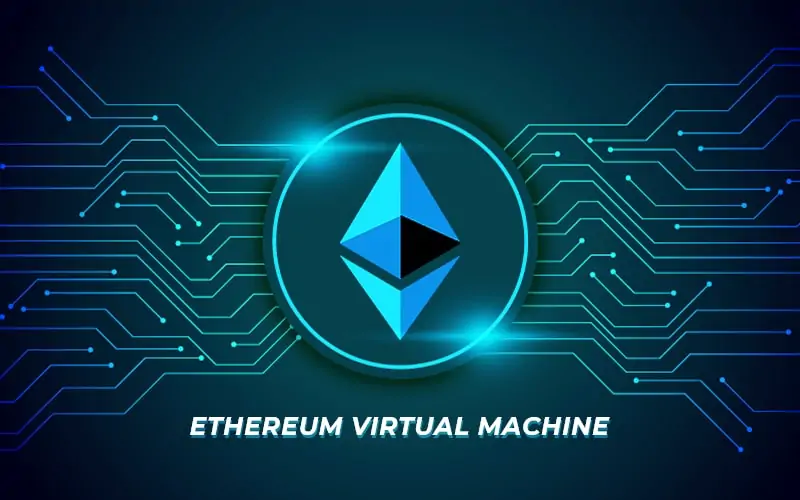How Does EVM Work?
Right here’s how EVM works: it processes smart contracts written in languages like Solidity, then converts good contracts into “bytecode” that the EVM can learn and execute.
Let’s see a breakdown of the important thing elements inside EVM:
The EVM consists of a number of key elements, every serving a particular operate. The stack is accountable for managing information throughout code execution. It tracks the present state whereas processing a contract.
The reminiscence shops short-term information wanted throughout transactions. The system retains this information solely in the course of the transaction and discards it afterward.
The storage element holds contract information completely on the blockchain. It shops essential data securely and retains it accessible throughout the community.
The final one is the execution element accountable for transaction processing and checks that their kind is according to the principles of the blockchain. It serves as a assure that good contracts will likely be executed appropriately and preserve system integrity.
The decentralized nature of EVM signifies that every node on the community independently processes the identical code in an effort to preserve integrity within the blockchain.
Advantages of EVM
The EVM presents a number of benefits which have made it widespread amongst blockchain builders:
- Transparency: The EVM is open-source, so anybody can view and confirm the code.
- Safety: Transactions on EVM are tamper-proof, guaranteeing person information stays safe.
- Interoperability: EVM-compatible chains permit purposes to run throughout a number of platforms, offering flexibility to builders.
- Trustless Transactions: No intermediaries are required, as good contracts self-execute primarily based on preset guidelines.
Limitations of EVM
Whereas EVM is highly effective, it faces some limitations:
- Scalability: Processing transactions on-chain results in slower speeds, particularly because the community grows.
- Gas Fees: Customers pay “gasoline” charges for each transaction, which may change into costly.
- Interoperability Challenges: Although EVM-compatible chains exist, integrating easily with non-Ethereum methods stays difficult.
Sensible Purposes of EVM
EVM is generally utilized in decentralized finance (DeFi), together with many different purposes. Through the use of EVM in DeFi, customers can participate in peer-to-peer lending, buying and selling, and decentralized exchanges (DEXs). It additionally helps NFTs and lots of different decentralized purposes.
EVM and the Way forward for Ethereum
EVM continues to evolve, and upgrades are focused in the direction of scalability and efficiency enhancements. Options like Layer 2 rollups, like zk-rollups and optimistic rollups-help course of transactions off-chain. They’re anticipated to scale back congestion on the community together with reducing down the prices.
Enhancements are recurrently instructed to the EVM by Ethereum’s group by one thing referred to as Ethereum Enchancment Proposals, or EIPs for brief.
Key Factors to Keep in mind
- EVM powers Ethereum’s good contracts, enabling decentralized apps.
- Advantages embrace safety, transparency, and interoperability.
- Challenges contain scalability and gasoline prices.
- Future Enhancements give attention to scaling options like Layer 2 rollups.
By providing protected and open purposes for the enlargement of the Ethereum ecosystem, EVM continues to be a significant element of blockchain improvement. As blockchain technology develops, EVM’s operate will likewise evolve over time, paving the way in which for decentralized apps which can be simpler to make use of and extra scalable.
